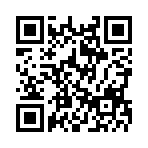椎间孔镜技术的雏形最初由Mathews、Ditsworth和Kambin提出的安全三角概念下研发[1-3],发展到目前主要有2大术式:Yeung等[4]研发的脊柱内镜操作系统(Yeung endoscopy spine system,YESS)技术及Hoogland等[5]研发的脊柱内镜操作系统(Thomas Hoogland endoscopy spine system,TESSYS)技术。在腰椎间盘突出症治疗方面,TESSYS技术可完全进入椎管内,较YESS技术有着更广泛的适应证,更受脊柱外科医生青睐[6-7]。随着现代生活方式的转变,学习压力的增加,青少年腰椎间盘突出症(adolescent lumbar disc herniation,ALDH)的发病率呈递增趋势。国内外已报道椎间孔镜治疗ALDH可取得较好的临床疗效,但由于青少年时期椎间盘骺软骨与椎体未完全融合,应用椎间孔镜治疗ALDH取得满意疗效的同时,其是否对椎间隙高度及脊柱稳定性有进一步影响尚未见报道。本研究在临床中应用椎间孔镜治疗ALDH的患者,将术前与术后(术后1天、3个月、6个月)对椎间隙高度(腰椎正侧位)、脊柱矢状位上椎体间位移及椎间成角(腰椎过伸过屈位)的变化进行对比分析,并应用视觉疼痛模拟评分(visual analogue scale,VAS)、功能障碍指数(Oswestry disability index,ODI)和改良MacNab对手术疗效进行评价,旨在为应用椎间孔镜技术治疗ALDH患者提供更全面、更系统的理论依据。
1 材料与方法 1.1 一般资料收集作者2013年7月-2019年5月期间应用椎间孔镜技术治疗腰椎间盘突出症的青少年患者45例(女性17例,男性28例),其中L3/4突出5例,L4/5突出23例,L5/S1突出17例,年龄14~21岁,平均(19.48±2.17)岁,病程3~10个月,平均(5.73±1.50)个月。
所有患者均完善常规影像学检查:腰椎正侧位、过伸过屈位DR片、腰椎CT和腰椎MRI。入院前均经至少3个月保守治疗无效;行椎间孔镜手术前患者症状、体征必须与影像学相符并排除其他手术禁忌证。
1.2 手术方法行静脉和局部麻醉,常规采用俯卧位。应用定位器,正位数字显影C型臂机透视下标定腰椎棘突中线和椎间隙水平,侧位C型臂机透视下标定椎间孔深度,L5~S1节段同时需要标记髂嵴线。常规穿刺点为此两条线的交点即进针点与棘突中线的距离(旁开距离)L3~4节段为8~10cm,L4~5节段为11~14cm,L5~S1节段为12~16cm;与水平面成15°~20°夹角。穿刺选用18G穿刺针,调整方向使针尖部能经过关节突关节腹侧向深部刺入(即经过Kambin安全三角刺入),C型臂透视到达靶点区域后,置入导丝,退出穿刺针,于穿刺部位切约7mm切口,逐级扩张放入工作套管。置入内镜,内镜下用射频消融电凝止血、髓核钳摘除突出或脱垂并压迫神经的髓核组织,射频消融处理絮状髓核组织及纤维环成形。生理盐水反复冲洗干净后,退出工作套管缝合伤口,敷料包扎固定,术后严密观察和记录下肢疼痛缓解情况及下肢肌力改善情况,告知患者术后锻炼注意事项。
1.3 研究指标分别在术前、术后1天、术后3个月、术后6个月随访患者,在我院影像后处理软件(Vue PACS)系统上测量患者椎间隙高度(图 1)、Dupuis法[8]测量脊柱矢状位上椎体间位移(AO或RO)及椎间成角(θ)评估脊柱稳定性(图 2);对术后患者腰痛和腿痛的缓解进行VAS、ODI评分,并根据改良MacNab评价优良率。

|
图 1 椎间隙高度测量 注:h为椎间隙腹侧高度、背侧高度和椎体中间高度三者平均值 |

|
图 2 脊柱矢状位上椎体间位移(AO或RO)及椎间成角(θ)的测量 注:A为腰椎过屈位;B为腰椎过伸位;椎体间位移为过伸过屈位测量的位移平均数;椎间成角为过伸过屈位测量的角度平均数 |
应用SPSS 19.0软件进行统计学分析。计量资料以x±s表示,计量资料比较采用重复测量数据的方差分析,进一步两两比较采用Bonferroni检验,P<0.05为差异有统计学意义。
2 结果 2.1 临床结果所有患者手术均顺利完成,手术时间45~110min,平均(78.58±15.92)min。并发症情况:3例术后发生短暂性屈伸膝肌力下降, 术后第1天即恢复正常,损伤原因与工作套管刺激出口根所致;1例术后出现踇趾背伸肌力0级,经过治疗术后1月后完全恢复,损伤原因考虑与进工作通道时发生挤压有关;1例患者术中出现短暂脊髓高压症状,术后2h即刻缓解,术后复发2例。
2.2 椎间孔镜技术对青少年患者椎间隙高度及脊柱稳定性的影响分别于术前、术后1天、术后3个月、术后6个月不同时间点在我院影像后处理软件(Vue PACS)系统上测量椎间隙高度(h),随着随访时间的延长,在术后3个月、术后6个月与术前相比较有统计学差异(P<0.05),说明术后椎间盘有继续退变的倾向。分析脊柱矢状位上椎体间位移(AO或RO)及椎间成角(θ),术前与术后比较均无统计学差异(P>0.05)。见表 1。
| 表 1 不同时间点测量的椎间隙高度(h)、矢状位椎间成角(θ)、椎体间位移比较(n=45,x±s) |
分别于术前、术后1天、术后3个月、术后6个月不同时间对应用经皮椎间孔镜治疗ALDH患者进行腰、腿痛VAS评分、腰痛ODI评分,经统计学分析表明患者术后腰腿痛均明显减轻,术后第1天与术前相比较具有显著差异(P<0.05);各组随着随访时间的延长,疼痛评分下降,且在术后第1天下降最显著。根据改良MacNab评价优良率为84.4%(38/45)。见表 2。
| 表 2 不同时间点对患者进行腰痛、腿痛VAS评分、ODI评分比较(n=45,x±s, 分) |
腰椎间盘突出症是临床上的一种常见病、多发病,是引起腰腿痛最常见的原因,多见于中老年人,而青少年相对少见。据报道,青少年患者的发病年龄多在16~21岁,发生率为0.5%~6.8%[9]。近年来,随着现代生活方式的转变,ALDH呈逐年递增趋势,且其发病原因并不十分明确,主要危险因素有外伤、遗传因素、发育异常、椎间盘退变、脊柱侧凸、炎症免疫等。ALDH的临床表现和成人有明显差异,主要表现为症状轻、体征重[10],在临床工作中极易忽略。据报道,对于ALDH的治疗手术治疗要比保守治疗效果要好[11],另外,通过手术还可以使45%~68.9%的青少年患者完全矫正因腰痛引起的代偿性脊柱侧凸[12-13]。微创手术是ALDH的最佳治疗方式,尤其是经皮椎间孔镜技术,其具有出血少、创伤小、术后疼痛轻,恢复快,住院时间短等特点,术后患者的生活质量明显提高[14-16]。由于青少年时期椎间盘骺软骨与椎体未完全融合,应用椎间孔镜治疗ALDH取得满意疗效的同时,其是否对椎间隙高度及脊柱稳定性有进一步影响尚未见报道。故本组患者主要研究应用经皮椎间孔镜技术治疗ALDH的临床疗效及对患者椎间隙高度、脊柱稳定性影响的研究。
本研究纳入患有腰椎间盘突出症的青少年患者年龄并非18岁,而是≤21岁,主要有2点原因:1)发育因素。正常情况下人体脊柱骺软骨在21岁左右与椎体完全融合[17-18];2)发病年龄。ALDH的发病年龄多集中在16~21岁[9]。椎间隙高度的进行丢失与椎间盘退变密切相关;脊柱不稳通常是在腰椎过伸过屈位上病变节段矢状位上位移超过3mm,或椎间成角>12°,故本研究中我们采用腰椎侧位椎间隙高度、腰椎过伸过屈位矢状位上椎体间位移及椎间成角来评价脊柱稳定性。经统计分析,我们发现应用经皮椎间孔镜技术治疗ALDH患者椎间隙高度(h),随着随访时间的延长,在术后3个月、术后6个月与术前相比较有统计学差异(P<0.05),说明术后椎间盘有继续退变的倾向;分析脊柱矢状位上椎体间位移(AO或RO)及椎间成角(θ)发现,术前与术后比较均无统计学差异,说明经皮椎间孔镜技术治疗ALDH对脊柱的结构及其稳定性并无显著影响。另外,临床疗效上,我们通过VAS、ODI评分比较发现,术后第1天与术前比较有统计学差异(P<0.05),且均在术后第1天评分显著下降,说明皮椎间孔镜技术治疗ALDH后疗效显著,且术后患者恢复快,早期即可下床,有效地缩短了住院时间,改良MacNab优良率为84.4%。
综上所述,我们在应用经皮椎间孔镜技术治疗ALDH取得满意的临床疗效的同时,不仅最大限度地降低对腰部肌肉软组织的损伤,而且近期随访的研究结果表明对青少年患者脊柱的骨性生理结构及其稳定性无显著影响。因此,该技术对青少年椎间盘突出患者来说是一种非常有效可供选择的微创治疗方式。
| [1] |
Mathews HH. Transforaminal endoscopic microdiscectomy[J]. Neurosurg Clin N Am, 1996, 7(1): 59-63. DOI:10.1016/S1042-3680(18)30405-4 |
| [2] |
Ditsworth DA. Endoscopic transforaminal lumbar discectomy and reconfiguration:a postero-lateral approach into the spinal canal[J]. Surg Neurol, 1998, 49(6): 588-597. DOI:10.1016/S0090-3019(98)00004-4 |
| [3] |
Kambin P, Schaffer JL. A multicenter analysis of percutaneous discectomy[J]. Spine (Phila Pa 1976), 1991, 16(7): 854-855. DOI:10.1097/00007632-199107000-00031 |
| [4] |
Yeung AT, Tsou PM. Posterolateral endoscopic excision for lumbar disc herniation:Surgical technique, outcome, and complications in 307 consecutive cases[J]. Spine (Phila Pa 1976), 2002, 27(7): 722-731. DOI:10.1097/00007632-200204010-00009 |
| [5] |
Hoogland T, Schubert M, Miklitz B, et al. Transforaminal posterolateral endoscopic discectomy with or without the combination of a low-dose chymopapain:a prospective randomized study in 280 consecutive cases[J]. Spine (Phila Pa 1976), 2006, 31(24): E890-897. DOI:10.1097/01.brs.0000245955.22358.3a |
| [6] |
Jasper GP, Francisco GM, Telfeian AE. Endoscopic transforaminal discectomy for an extruded lumbar disc herniation[J]. Pain Physician, 2013, 16(1): E31-35. |
| [7] |
Lühmann D, Burkhardt-Hammer T, Borowski C, et al. Minimally invasive surgical procedures for the treatment of lumbar disc herniation[J]. GMS Health Technol Assess, 2005, 1: Doc07. |
| [8] |
Dupuis PR, Yong-Hing K, Cassidy JD, et al. Radiologic diagnosis of degenerative lumbar spinal instability[J]. Spine (Phila Pa 1976), 1985, 10(3): 262-276. DOI:10.1097/00007632-198504000-00015 |
| [9] |
Chang CH, Lee ZL, Chen WJ, et al. Clinical significance of ring apophysis fracture in adolescent lumbar disc herniation[J]. Spine (Phila Pa 1976), 2008, 33(16): 1750-1754. DOI:10.1097/BRS.0b013e31817d1d12 |
| [10] |
Ozgen S, Konya D, Toktas OZ, et al. Lumbar disc herniation in adolescence[J]. Pediatr Neurosurg, 2007, 43(2): 77-81. DOI:10.1159/000098377 |
| [11] |
Dang L, Liu Z. A review of current treatment for lumbar disc herniation in children and adolescents[J]. Eur Spine J, 2010, 19(2): 205-214. DOI:10.1007/s00586-009-1202-7 |
| [12] |
Matsui H, Ohmori K, Kanamori M, et al. Significance of sciatic scoliotic list in operated patients with lumbar disc herniation[J]. Spine (Phila Pa 1976), 1998, 23(3): 338-342. DOI:10.1097/00007632-199802010-00010 |
| [13] |
Suk KS, Lee HM, Moon SH, et al. Lumbosacral scoliotic list by lumbar disc herniation[J]. Spine (Phila Pa 1976), 2001, 26(6): 667-671. DOI:10.1097/00007632-200103150-00023 |
| [14] |
Bokov A, Isrelov A, Skorodumov A, et al. An analysis of reasons for failed back surgery syndrome and partial results after different types of surgical lumbar nerve root decompression[J]. Pain Physician, 2011, 14(6): 545-557. |
| [15] |
Lee DY, Shim CS, Ahn Y, et al. Comparison of percutaneous endoscopic lumbar discectomy and open lumbar microdiscectomy for recurrent disc herniation[J]. J Korean Neurosurg Soc, 2009, 46(6): 515-521. DOI:10.3340/jkns.2009.46.6.515 |
| [16] |
Jasper GP, Francisco GM, Telfeian AE. Clinical success of transforaminal endoscopic discectomy with foraminotomy:a retrospective evaluation[J]. Clin Neurol Neurosurg, 2013, 115(10): 1961-1965. DOI:10.1016/j.clineuro.2013.05.033 |
| [17] |
Silvers HR, Lewis PJ, Clabeaux DE, et al. Lumbar disc excisions in patients under the age of 21 years[J]. Spine (Phila Pa 1976), 1994, 19(21): 2387-2392. DOI:10.1097/00007632-199411000-00002 |
| [18] |
Parisini P, Di SM, Greggi T, et al. Lumbar disc excision in children and adolescents[J]. Spine (Phila Pa 1976), 2001, 26(18): 1997-2000. DOI:10.1097/00007632-200109150-00011 |

